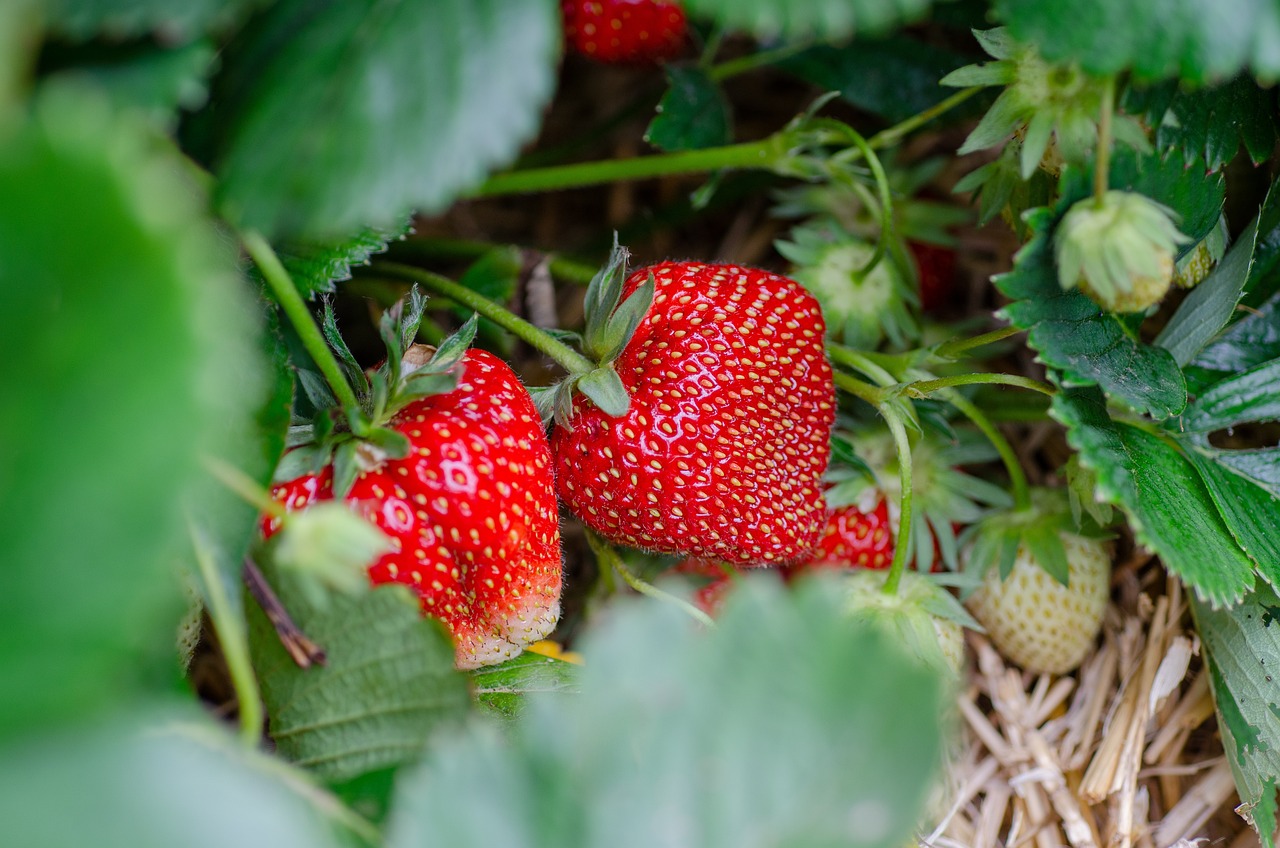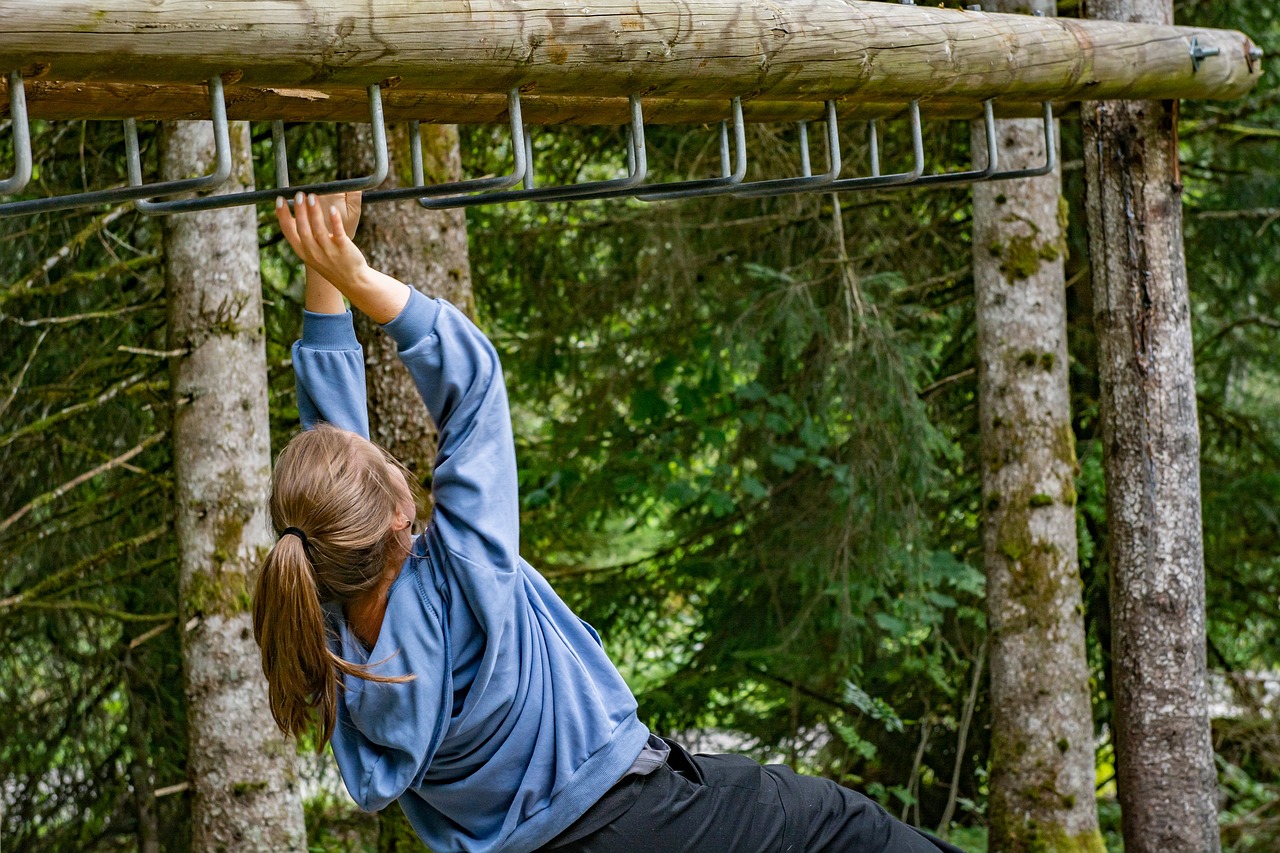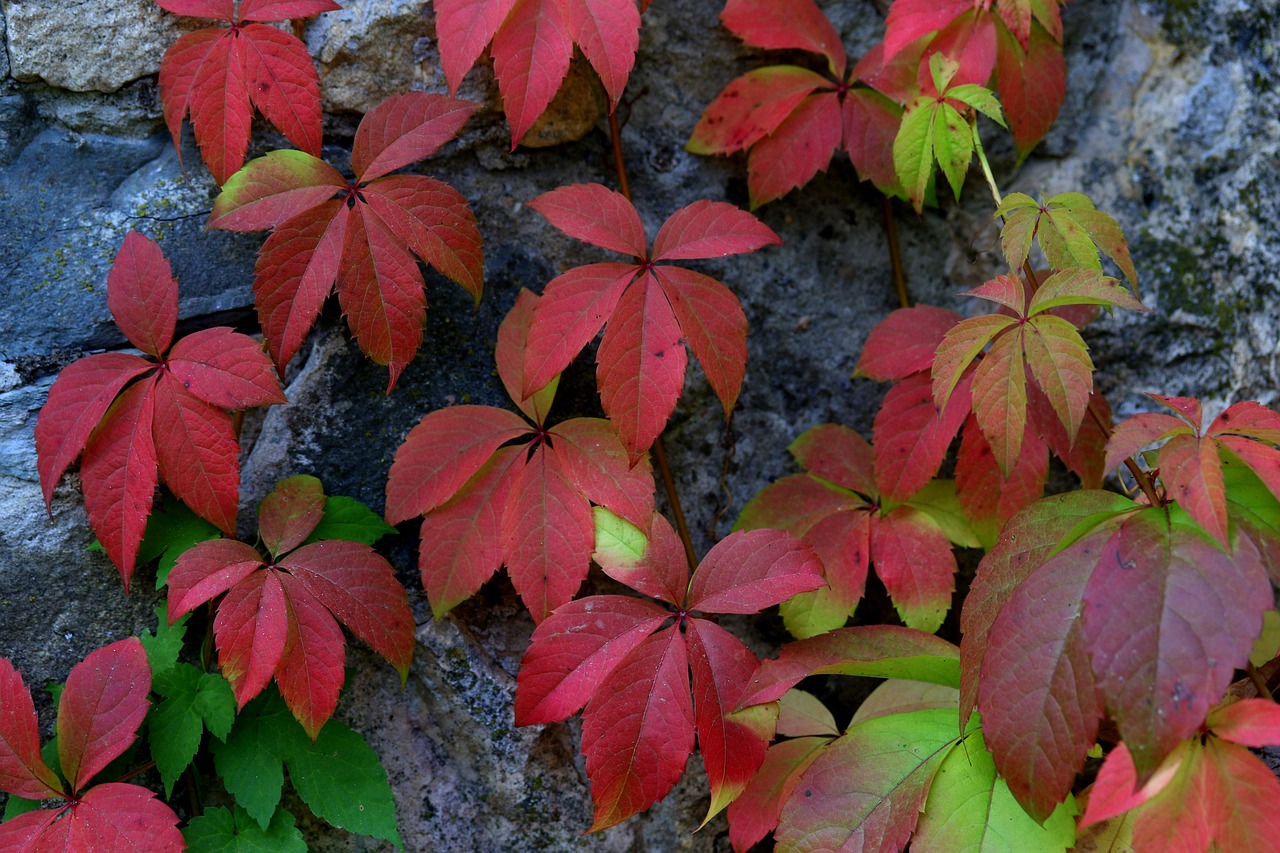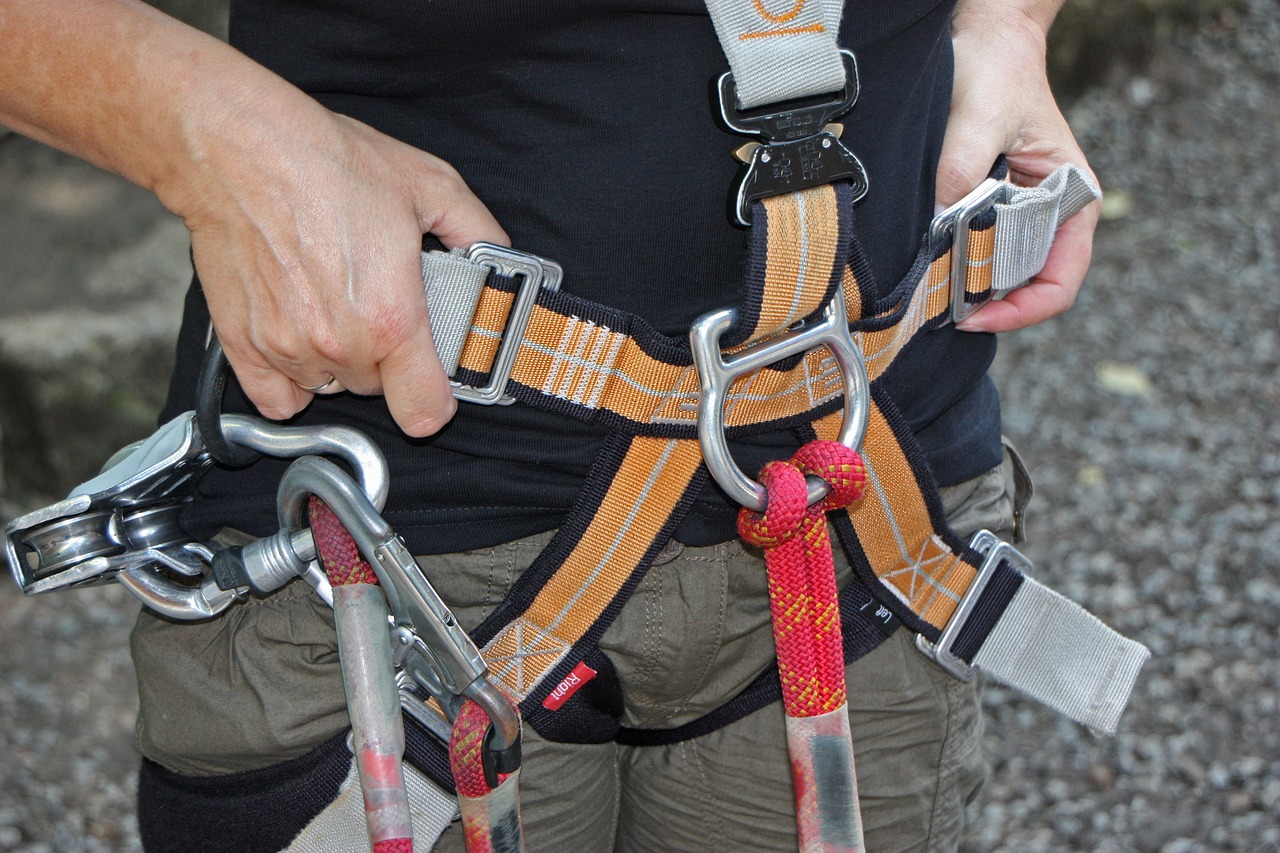How to Choose and Grow Climbing Plants
Are you ready to transform your garden into a stunning vertical paradise? Climbing plants can be the perfect solution to add dimension, color, and life to your outdoor space. Whether you're looking to create a lush green wall, a fragrant floral display, or simply want to maximize your garden's potential, knowing how to choose and grow these remarkable plants is essential. In this article, we'll explore the ins and outs of climbing plants, from selecting the right varieties to ensuring they flourish in your garden.
Climbing plants, often referred to as vines, have a unique way of growing that sets them apart from other plants. They possess specialized structures that allow them to ascend surfaces, whether it's a fence, wall, or trellis. This growth habit not only makes them visually appealing but also provides numerous benefits to gardens and landscapes. For instance, they can create privacy, reduce noise, and even offer shade. Understanding the characteristics of climbing plants is the first step in harnessing their beauty and utility.
Choosing the right climbing plant for your space is crucial. It's not just about aesthetics; you need to consider several factors to ensure your climbing plant thrives. Here are some essential aspects to keep in mind:
- Climate: Different climbing plants thrive in different climates. Make sure to select a variety that is suitable for your local weather conditions.
- Light Conditions: Assess how much sunlight your garden receives. Some climbing plants prefer full sun, while others thrive in partial shade.
- Intended Use: Think about what you want from your climbing plants. Are you looking for flowers, foliage, or perhaps a privacy screen?
When it comes to climbing plants, the options are endless! From vibrant flowering vines to lush evergreen climbers, there’s something for every garden. Let’s dive into some popular types and what makes them special.
Flowering climbers are like the stars of your garden, adding vibrant colors and delightful scents. Some popular varieties include:
- Wisteria: Known for its cascading clusters of purple flowers, wisteria can create a stunning visual impact.
- Honeysuckle: This sweet-smelling vine attracts pollinators and adds a touch of charm to any space.
- Clematis: With a variety of colors and bloom times, clematis can provide continuous beauty throughout the growing season.
Not all climbing plants need to flower to make a statement. Some are prized for their lush foliage, providing texture and greenery year-round. Consider these options:
- English Ivy: A classic choice, ivy offers rich, green leaves that can cover walls and fences.
- Boston Fern: This elegant climber brings a tropical vibe to your garden with its feathery fronds.
Before you dive into planting, it's essential to evaluate your garden’s environment. Climbing plants have specific growth conditions they thrive in, including:
- Sunlight: Most climbing plants prefer full sun to partial shade.
- Soil Type: Well-draining soil enriched with organic matter is ideal.
- Moisture Levels: Regular watering is crucial, but be cautious of overwatering.
Once you've selected your climbing plants, proper planting techniques are vital for their successful establishment. Here’s a step-by-step guide to ensure your plants get off to a great start:
Healthy soil is the foundation for thriving plants. To prepare your soil:
- Test the pH level and amend it if necessary.
- Add organic compost to improve soil structure and fertility.
- Ensure proper drainage to prevent waterlogging.
Most climbing plants require some form of support to thrive. Consider the following options:
- Trellises: Great for smaller spaces, they can be freestanding or attached to walls.
- Arbors: These can create an enchanting entryway while providing support for climbing plants.
Ongoing care is essential for the health of climbing plants. Regular maintenance ensures they remain vibrant and vigorous. Here are some key areas to focus on:
Understanding the watering and fertilizing needs of climbing plants is crucial for their success. Here’s how to keep them hydrated and nourished:
- Water deeply but infrequently to encourage deep root growth.
- Use a balanced fertilizer during the growing season to promote healthy growth.
Regular pruning helps maintain shape and encourages healthy growth. Depending on the type of climbing plant, different pruning techniques may be required. For example, flowering climbers often benefit from pruning after flowering to encourage new growth. On the other hand, foliage-only climbers may need occasional trimming to control their spread.
1. How do I know which climbing plant is best for my garden? Consider your climate, light conditions, and what you want to achieve with the plant. Research varieties that thrive in your area.
2. Can climbing plants damage structures? While most climbing plants are harmless, some can be aggressive. Choose varieties that are suitable for your support structures.
3. How often should I water my climbing plants? Watering needs vary by species and climate, but generally, climbing plants prefer consistent moisture without waterlogging.
4. Do climbing plants require special care in winter? Many climbing plants benefit from winter protection, such as mulching or wrapping vulnerable stems.

Understanding Climbing Plants
This article explores the essential factors in selecting and cultivating climbing plants, providing tips on variety selection, growth conditions, and maintenance for a thriving vertical garden.
Climbing plants, often referred to as vines, possess a unique ability to ascend structures or other plants, creating a stunning vertical display in gardens and landscapes. They are characterized by their long, flexible stems that can wrap around supports or cling to surfaces, allowing them to reach for sunlight in a way that other plants cannot. These remarkable plants are not just visually appealing; they also play a crucial role in enhancing the biodiversity of your garden, providing habitats for various wildlife and contributing to the overall ecosystem.
When we think about climbing plants, it’s essential to recognize that they come in different forms, each with its distinct characteristics and benefits. Some of the most common types include:
- Twining Vines: These plants wrap their stems around supports as they grow, using a natural twisting motion. Examples include Morning Glory and Wisteria.
- Clinging Vines: These climbers use specialized structures like tendrils or adhesive pads to attach themselves to surfaces. A popular example is English Ivy.
- Trailing Plants: Although not strictly climbing, these plants can cascade down from containers or hanging baskets, providing a beautiful draping effect. String of Pearls is a great example.
One of the most significant advantages of growing climbing plants is their ability to maximize vertical space, making them perfect for small gardens or urban settings where ground space is limited. By growing upwards, they can create a lush, green wall that not only adds aesthetic value but also provides shade and privacy. Additionally, climbing plants can help reduce energy costs by cooling buildings in the summer, as they provide a natural barrier against heat.
Another fascinating aspect of climbing plants is their ability to produce vibrant flowers or lush foliage, depending on the type you choose. Flowering climbers can transform a dull wall into a breathtaking display of color, while foliage-only varieties can add texture and depth to your garden. No matter your preference, there’s a climbing plant that can fit your vision.
In summary, understanding the characteristics and benefits of climbing plants is the first step in creating a stunning vertical garden. From their unique growth habits to their ecological contributions, these plants offer a world of possibilities for any gardener. As you continue to explore your options, keep in mind the various types of climbing plants available, and consider how they can enhance your outdoor space.
Selecting the appropriate climbing plant for your space is crucial. Here, we explore factors such as climate, light conditions, and intended use to help you make an informed choice.
From flowering vines to evergreen climbers, various types suit different aesthetics and purposes. This section highlights popular climbing plants and their unique attributes.
Flowering climbers add vibrant colors and scents to your garden. We’ll discuss some popular varieties and their care requirements to ensure a beautiful display.
Not all climbing plants flower; some are prized for their lush foliage. This section covers the best foliage-only climbers and how they can enhance your garden’s texture.
Before planting, it’s essential to evaluate your garden’s environment. This section highlights the key growth conditions, including sunlight, soil type, and moisture levels needed for climbing plants.
Proper planting techniques are vital for the successful establishment of climbing plants. This section provides step-by-step guidance on planting methods and spacing considerations.
Healthy soil is the foundation for thriving plants. Here, we discuss soil preparation tips, including amendments and drainage solutions tailored for climbing plants.
Climbing plants often require support to thrive. This section explores various support structures, such as trellises and arbors, and how to choose the right one for your plants.
Ongoing care is essential for the health of climbing plants. This section covers watering, fertilizing, pruning, and pest management to ensure robust growth and flowering.
Understanding the watering and fertilizing needs of climbing plants is crucial for their success. This section outlines best practices for hydration and nutrient application.
Regular pruning helps maintain shape and encourages healthy growth. We’ll discuss effective pruning techniques tailored to different types of climbing plants for optimal results.
Here are some common questions about climbing plants and their care:
- What are the best climbing plants for small gardens? Look for compact varieties such as Sweet Peas or Climbing Roses.
- How often should I water my climbing plants? It generally depends on the climate and soil type, but a good rule of thumb is to check the soil moisture regularly.
- Can I grow climbing plants in pots? Absolutely! Just ensure the pot is large enough and has adequate drainage.

Choosing the Right Climbing Plant
Choosing the right climbing plant for your garden is not just a matter of picking a pretty flower or a lush green vine; it’s about understanding your specific environment and how different plants will thrive in it. Just like you wouldn’t wear winter clothes in the summer heat, you shouldn’t choose a climbing plant that isn’t suited for your climate. So, what should you consider? Let’s break it down.
First and foremost, climate plays a crucial role in your selection process. Are you living in a region that experiences harsh winters or a tropical paradise where the sun shines almost every day? Different climbing plants have varying tolerances to temperature and weather conditions. For instance, if you’re in a cooler area, you might want to consider hardy climbers like Clematis or Honeysuckle, which can withstand frost. Conversely, if you’re in a warmer climate, think about Passionflower or Jasmine, which thrive in the heat.
Next up is light conditions. Does your garden bask in full sunlight, or is it more of a shady retreat? This factor is essential because some climbing plants are sun-worshippers while others prefer the cool shade. For sunny spots, Climbing Roses and Morning Glories can add stunning colors and fragrances. On the other hand, for shadier areas, consider English Ivy or Virginia Creeper, which can flourish even in less-than-ideal lighting.
Another consideration is the intended use of your climbing plants. Are you looking to create a beautiful focal point, provide privacy, or perhaps cover an unsightly wall? Your goals can significantly influence your choice. For instance, if privacy is your main concern, fast-growing climbers like Wisteria or Trumpet Vine can quickly create a green screen. However, if aesthetics are your priority, flowering vines such as Sweet Pea or Black-eyed Susan can offer a stunning visual appeal.
Lastly, don’t forget about the maintenance requirements of your chosen plant. Some climbing plants are low-maintenance, while others require regular pruning and care. If you’re a busy bee with little time to spare, opt for plants like Honeysuckle that are relatively easy to manage. However, if you enjoy gardening and have the time to dedicate, you might want to try your hand at more demanding varieties like Climbing Roses, which, while requiring more attention, reward you with breathtaking blooms.
In summary, selecting the right climbing plant is a balance of understanding your garden's unique conditions and your personal preferences. By considering climate, light, intended use, and maintenance needs, you can make an informed choice that will lead to a thriving vertical garden. So, what climbing plant will you choose to elevate your outdoor space?
Here are some common questions that might help you in your journey to choose the perfect climbing plant:
- What is the best climbing plant for beginners? If you're new to gardening, consider starting with Honeysuckle or Morning Glory, as they are relatively easy to grow.
- How much sunlight do climbing plants need? It varies by species; some thrive in full sun, while others prefer partial shade. Always check the specific needs of the plant you choose.
- Can I grow climbing plants in pots? Yes, many climbing plants can be grown in pots as long as they have adequate support and the right soil conditions.

Types of Climbing Plants
When it comes to climbing plants, the variety is truly astonishing! These green wonders can transform any dull space into a vibrant oasis. Climbing plants, or vines, come in various forms, each bringing its unique charm and functionality to your garden. The choice of climbing plant can significantly affect the aesthetic and ecological balance of your outdoor space. Let’s delve into the different types of climbing plants you might consider for your vertical garden.
First off, we have flowering climbing plants. These beauties are known for their stunning blooms that can add a splash of color and delightful fragrance to your garden. Imagine walking through your garden and being greeted by the sweet scent of jasmine or the vibrant hues of a climbing rose. Some popular flowering climbers include:
- Wisteria: Known for its cascading clusters of flowers, wisteria is a showstopper in any garden.
- Honeysuckle: This vine not only attracts pollinators but also provides a lovely sweet aroma.
- Climbing Roses: These classic beauties can create a romantic atmosphere with their lush blooms.
On the other hand, we have foliage-only climbing plants. While they may not produce flowers, these plants are prized for their lush, green leaves that can create a rich tapestry of textures in your garden. They are perfect for adding depth and greenery to vertical spaces. Some noteworthy foliage climbers include:
- English Ivy: A versatile plant that can thrive in various conditions and offers a classic look.
- Boston Fern: Ideal for shaded areas, this fern adds a delicate touch to your garden.
- Climbing Fig: This plant is known for its attractive, heart-shaped leaves that cling to surfaces.
Each type of climbing plant has its unique attributes and requirements. When selecting your climbers, consider factors such as climate, light conditions, and space availability. For instance, flowering climbers often require more sunlight to produce blooms, while some foliage climbers can thrive in shadier spots. Understanding these needs will help you create a harmonious garden that flourishes throughout the seasons.
To sum up, the world of climbing plants is rich and diverse. Whether you’re drawn to the vibrant colors of flowering vines or the lush greenery of foliage climbers, there’s something out there for everyone. Choose wisely, and you’ll be rewarded with a stunning vertical garden that not only beautifies your space but also enhances your outdoor living experience.
Q: What are the best climbing plants for beginners?
A: For beginners, consider easy-to-grow options like Morning Glory or Sweet Peas. They are not only beautiful but also forgiving for novice gardeners.
Q: How much sunlight do climbing plants need?
A: Most flowering climbing plants thrive in full sun, requiring at least 6 hours of direct sunlight daily, while some foliage-only varieties can tolerate partial shade.
Q: Do climbing plants damage walls or structures?
A: While some climbing plants can cling tightly to surfaces, it’s essential to choose the right type and monitor their growth to prevent any potential damage.
Q: How often should I water my climbing plants?
A: Watering needs can vary, but a general rule is to keep the soil consistently moist but not soggy. Check the top inch of soil; if it's dry, it's time to water!

Flowering Climbing Plants
Flowering climbing plants are a spectacular addition to any garden, offering not just greenery but also a burst of color and delightful fragrances. Imagine stepping into your backyard and being greeted by the sweet scent of jasmine or the vibrant blooms of a climbing rose. These plants can transform dull walls and fences into living art, creating a stunning vertical garden that draws the eye and elevates the overall aesthetic of your outdoor space.
When choosing flowering climbers, it's essential to consider their growth habits and blooming seasons. Some varieties, like wisteria, produce cascading clusters of flowers in spring, while others, such as clematis, can bloom multiple times throughout the growing season. This diversity allows gardeners to plan a staggered display of colors and fragrances, ensuring that something is always in bloom.
Here are a few popular flowering climbing plants that can enhance your garden:
- Roses: Climbing roses are classic favorites, known for their stunning blooms and intoxicating scents. They require good support and regular pruning to maintain their shape and health.
- Jasmine: This fast-growing vine produces small, fragrant white or yellow flowers. It's perfect for trellises and can be used to create a beautiful, aromatic privacy screen.
- Honeysuckle: With its sweetly scented flowers, honeysuckle attracts pollinators like bees and butterflies. It's a hardy plant that thrives in various conditions, making it a versatile choice.
- Passionflower: Known for its exotic appearance, the passionflower produces unique blooms that are both stunning and intriguing. It can also bear edible fruit, adding another layer of interest.
When caring for flowering climbers, it's crucial to understand their specific needs. Most require full sun to thrive, although some can tolerate partial shade. Regular watering, especially during dry spells, is essential to keep them healthy and blooming profusely. Additionally, applying a balanced fertilizer during the growing season can encourage vibrant blooms and lush foliage.
In terms of pruning, flowering climbers often have unique requirements based on their growth habits. For example, some, like clematis, should be pruned after blooming, while others may need to be cut back in late winter to promote new growth. Understanding these nuances is key to ensuring your climbing plants flourish and produce an abundance of flowers.
In summary, flowering climbing plants not only beautify your garden but also provide a habitat for pollinators and create a serene atmosphere. By selecting the right varieties and providing them with the care they need, you can enjoy a breathtaking display of color and fragrance throughout the growing seasons.
Q: What are the best flowering climbing plants for beginners?
A: Some beginner-friendly options include climbing roses, honeysuckle, and jasmine. These plants are relatively easy to care for and provide stunning blooms.
Q: How much sunlight do flowering climbing plants need?
A: Most flowering climbers thrive in full sun, requiring at least 6 hours of direct sunlight per day. However, some varieties can tolerate partial shade.
Q: Can I grow flowering climbing plants in containers?
A: Yes! Many flowering climbers can be grown in containers, provided they have adequate support and enough space for their roots to grow.
Q: When is the best time to prune flowering climbing plants?
A: Pruning times vary by species. Generally, it's best to prune after flowering for those that bloom on old wood and in late winter for those that bloom on new growth.

Foliage-Only Climbing Plants
When it comes to adding a touch of green to your garden, can be a game-changer. These plants are not just about the flowers; they bring a rich tapestry of textures and shades that can transform any vertical space into a lush oasis. Imagine a wall of vibrant greens wrapping around your porch or a trellis adorned with cascading leaves. It’s like nature’s wallpaper, and the best part? You get all the beauty without the fuss of blooms!
One of the standout features of foliage-only climbers is their ability to create a sense of depth and volume in your garden. They can soften hard structures, such as fences and walls, while providing a backdrop for other plants. Think of them as the supporting actors in your garden's play, enhancing the overall performance without stealing the spotlight. Some popular varieties include the Boston Fern, known for its feathery fronds, and the English Ivy, which is celebrated for its classic charm and adaptability.
When selecting foliage-only climbing plants, consider their growth habits and how they will interact with their surroundings. Some climbers, like the Climbing Hydrangea, can grow quite large and require sturdy support, while others, like Star Jasmine, can be more manageable and fragrant, adding an additional sensory layer to your garden. Here’s a quick comparison:
| Plant Name | Growth Habit | Light Requirements | Unique Features |
|---|---|---|---|
| Boston Fern | Lush and bushy | Partial shade | Feathery fronds |
| English Ivy | Fast-growing | Full sun to partial shade | Classic look, adaptable |
| Climbing Hydrangea | Large and robust | Partial shade | Beautiful white flowers in summer |
| Star Jasmine | Moderate growth | Full sun | Fragrant white flowers |
To successfully grow these climbers, you need to pay attention to their specific care requirements. Most foliage-only climbing plants thrive in well-drained soil and appreciate regular watering, but they don’t want to sit in soggy conditions. A good rule of thumb is to check the soil moisture regularly, allowing it to dry out slightly between waterings. Additionally, consider the light conditions in your garden. While some climbers prefer full sun, others thrive in the shade, so it’s essential to match the plant with the right environment.
Incorporating foliage-only climbing plants into your garden not only enhances its beauty but also contributes to biodiversity. They can provide shelter for birds and beneficial insects, making your garden a thriving ecosystem. So, whether you’re looking to cover an unsightly wall or simply want to add some greenery to your outdoor space, foliage-only climbers are an excellent choice. They are low-maintenance, visually appealing, and can even improve the air quality around your home!
- What are the best foliage-only climbing plants for beginners? Some excellent choices for beginners include English Ivy and Boston Fern, as they are relatively easy to care for.
- How much sunlight do foliage-only climbing plants need? It varies by species; some thrive in full sun, while others prefer partial shade. Always check the specific needs of the plant you choose.
- Can I grow foliage-only climbing plants in containers? Yes! Many climbing plants can thrive in containers, but ensure they have adequate support and drainage.

Assessing Growth Conditions
Before you dive headfirst into planting those beautiful climbing plants, it's crucial to assess the growth conditions of your garden. Think of your garden as a stage where each plant is a performer; they need the right setting to shine. So, what are the key factors to consider? Let's break it down!
First and foremost, sunlight is a vital ingredient for any plant's success. Most climbing plants thrive in full sun, which means they need at least 6 to 8 hours of direct sunlight each day. However, some varieties, like hops or certain clematis, can tolerate partial shade. To determine how much sunlight your space receives, observe it throughout the day. Are there any trees or structures casting shadows? If so, you might need to adjust your plant selection accordingly.
Next up is soil type. Climbing plants generally prefer well-draining soil rich in organic matter. This helps retain moisture while preventing root rot. Conduct a simple soil test to check the pH and nutrient levels. Most climbing plants enjoy a slightly acidic to neutral pH (around 6.0 to 7.0). If your soil is too sandy or clay-heavy, consider amending it with compost or peat moss to improve its structure. You can also create a soil amendment table to track what you need:
| Soil Type | Amendments |
|---|---|
| Sandy | Compost, Peat Moss |
| Clay | Sand, Organic Matter |
| Loamy | Minimal Amendments |
Another critical factor is moisture levels. Climbing plants need consistent moisture, especially during their growing season. However, overwatering can be just as detrimental as underwatering. Aim for a balance! A simple way to check moisture is by sticking your finger into the soil; if the top inch feels dry, it's time to water. Consider installing a drainage system if your area tends to hold water, as this can lead to root diseases.
Finally, don’t forget about wind exposure. If your garden is in a windy area, look for climbing plants that can withstand those gusts. Some plants, like ivy or wisteria, are more resilient and can adapt to such conditions. You might also want to consider installing windbreaks or protective barriers to shield your plants during their early growth stages.
In summary, assessing the growth conditions of your garden is like setting the stage for a spectacular performance. By paying attention to sunlight, soil type, moisture levels, and wind exposure, you can create an ideal environment for your climbing plants to thrive. Remember, the right conditions lead to vibrant growth, beautiful blooms, and a stunning vertical garden that will be the envy of your neighborhood!
- What type of soil is best for climbing plants?
Climbing plants generally prefer well-draining soil rich in organic matter. - How much sunlight do climbing plants need?
Most climbing plants thrive in full sun, requiring at least 6 to 8 hours of direct sunlight daily. - Can climbing plants grow in shade?
Yes, some varieties can tolerate partial shade, but it's essential to choose the right type for those conditions. - How often should I water climbing plants?
Water them consistently, ensuring the top inch of soil is dry before watering again.

Planting Techniques for Climbing Plants
When it comes to planting climbing plants, the techniques you employ can make all the difference between a flourishing vertical garden and a lackluster display. First off, you want to ensure you're planting at the right time of year. Most climbing plants thrive when planted in spring or fall, allowing them to establish roots before the extremes of summer or winter hit. So, grab your gardening gloves and let’s dig into the essentials!
One of the most critical steps in planting is choosing the right location. Climbing plants typically love sunlight, but the amount can vary based on the species. For instance, while some may bask in full sun, others prefer partial shade. It’s essential to research your selected plant's specific light requirements to give it the best chance to thrive. Imagine trying to grow a sun-loving vine in the shadow of a large tree—it's like trying to shine in a dim room!
Next, let’s talk about soil preparation. Healthy, well-draining soil is crucial for the success of your climbing plants. Before planting, consider conducting a soil test to determine its pH and nutrient levels. Most climbing plants prefer a slightly acidic to neutral pH (around 6.0 to 7.0). If your soil is lacking, you can amend it with organic matter like compost or well-rotted manure to enhance its fertility. Think of your soil as a buffet—rich ingredients will ensure your plants feast well!
When it comes to the actual planting process, follow these steps for optimal results:
- Digging the Hole: Create a hole that is twice as wide and just as deep as the plant’s root ball. This gives the roots plenty of room to spread.
- Positioning the Plant: Place the plant in the hole, ensuring the top of the root ball is level with the soil surface. You don’t want it too deep or too shallow—just right!
- Backfilling: Fill in around the root ball with soil, gently pressing down to eliminate air pockets. Water generously after planting to help settle the soil.
Another vital aspect of planting climbing plants is providing adequate support structures. Since these plants naturally grow upwards, they need something to cling to as they reach for the sky. Trellises, arbors, and fences are popular choices. When selecting a support structure, consider the plant's growth habit and weight. For instance, heavier varieties like wisteria require sturdy supports, while lighter vines like sweet peas can thrive on simpler trellises. It’s like choosing the right partner for a dance—both need to complement each other to create a beautiful performance!
Finally, be mindful of spacing. Climbing plants can become quite dense, so it's important to space them appropriately to prevent overcrowding. A general rule of thumb is to plant them at least 12 to 24 inches apart, depending on the species. This allows for air circulation and sunlight penetration, which are vital for healthy growth. Think of it as giving each plant its own personal space—everyone flourishes better when they have room to breathe!
In summary, planting climbing plants is not just about putting them in the ground; it’s a careful process that involves choosing the right location, preparing the soil, providing adequate support, and ensuring proper spacing. By following these techniques, you’ll set the stage for a stunning vertical garden that will captivate your senses and become the envy of the neighborhood!
Q: How often should I water my climbing plants after planting?
A: Newly planted climbing plants typically need regular watering until they establish roots, which can take a few weeks. Aim to keep the soil consistently moist but not soggy.
Q: Can I grow climbing plants in pots?
A: Yes! Many climbing plants can thrive in pots, but make sure you choose a large enough container and provide a sturdy support structure.
Q: How do I know if my climbing plant is getting enough sunlight?
A: If your plant is growing leggy or not producing flowers, it might not be getting enough light. Adjust its position or consider trimming back surrounding foliage to let in more sun.

Preparing the Soil
When it comes to cultivating climbing plants, the foundation of your garden lies in the soil. Think of soil as the bedrock of your climbing garden; without healthy, nutrient-rich earth, your plants may struggle to thrive. Preparing the soil is not just about digging a hole and dropping in a seedling; it’s a meticulous process that sets the stage for vibrant growth and robust health. Start by assessing the current state of your soil. Is it sandy, clayey, or loamy? Each type has its own characteristics and will influence how well your climbing plants will do.
To create the perfect environment for your climbing plants, consider the following steps:
- Testing Soil pH: Climbing plants generally prefer a pH level between 6.0 and 7.0. You can easily test your soil with a home testing kit, which will help you determine whether you need to add lime to raise the pH or sulfur to lower it.
- Adding Organic Matter: Enrich your soil by incorporating organic matter such as compost, well-rotted manure, or peat moss. This not only improves soil structure but also enhances its moisture retention and nutrient content.
- Ensuring Good Drainage: Climbing plants often dislike waterlogged conditions. To improve drainage, you might consider mixing in some coarse sand or perlite, especially if your soil is heavy clay.
Once you’ve assessed and amended your soil, it’s time to get your hands dirty! Dig down at least 12 inches to break up compacted soil and allow roots to penetrate easily. As you dig, remove any rocks, roots, or debris that could hinder growth. If you’re planting multiple climbing plants, consider spacing them appropriately based on their mature size. This not only promotes healthy growth but also ensures that each plant has enough access to sunlight and nutrients.
After preparing the soil, it’s essential to let it rest for a few days before planting. This resting period allows the nutrients to settle and gives you time to further plan how to arrange your climbing plants. Remember, the goal is to create an environment that mimics the natural habitat of your chosen vines. By investing time and effort in soil preparation, you’ll set your climbing plants up for a flourishing future.
Q: How often should I test my soil?
A: It's a good practice to test your soil every 1-2 years, especially if you're noticing changes in plant health.
Q: Can I use regular garden soil for climbing plants?
A: While regular garden soil can work, it's beneficial to amend it with organic matter to improve its quality and structure.
Q: What should I do if my soil is too acidic?
A: If your soil is too acidic, you can add lime to raise the pH level, but always test first to know how much to add.
Q: How deep should I prepare the soil for climbing plants?
A: Aim to prepare the soil at least 12 inches deep to ensure proper root development.

Support Structures
When it comes to growing climbing plants, choosing the right support structure is crucial for their success. Think of these structures as the backbone of your vertical garden; they provide the necessary support for your plants to thrive and flourish. Without adequate support, climbing plants can become tangled, stunt their growth, or even succumb to damage. So, let’s dive into the various options available and how to select the best one for your green companions.
There are several types of support structures you can consider for your climbing plants, and each has its own unique benefits. Some of the most common options include:
- Trellises: These are perhaps the most popular choice for many gardeners. Trellises can be made from wood, metal, or plastic and come in various designs. They not only support your climbing plants but can also serve as decorative elements in your garden.
- Arbors: If you’re looking to create a stunning entrance or a shaded area in your garden, arbors are an excellent choice. They are larger structures that can support heavier vines and create a beautiful archway.
- Fences: Utilizing existing fences is a smart and resourceful way to support climbing plants. Many vines thrive when they can cling to a sturdy surface, and a fence can provide ample space for growth.
- Wire Supports: For a more minimalist approach, wire supports can be strung between posts or attached to walls. This option is often used for lighter vines and can create a modern aesthetic.
When selecting a support structure, consider the following factors:
| Factor | Consideration |
|---|---|
| Plant Type | Ensure the structure can support the weight and growth habit of your chosen climbing plant. |
| Location | Assess the space available and how much sunlight the area receives, as this will influence plant growth. |
| Aesthetics | Choose a structure that complements your garden's design and enhances its visual appeal. |
| Durability | Ensure the materials used can withstand the elements and support the plants over time. |
Once you’ve chosen the perfect support structure, it’s essential to install it correctly. Make sure it’s firmly anchored and positioned in a way that allows your climbing plants to reach for the sky. As your plants grow, you may need to guide them towards the support to ensure they climb effectively. This can be done by gently tying them to the structure with soft ties or garden twine. Remember, the goal is to encourage upward growth while preventing any damage to the stems.
In summary, the right support structure not only aids in the healthy growth of climbing plants but also enhances the overall beauty of your garden. By carefully considering your options and ensuring proper installation, you can create a stunning vertical landscape that will be the envy of all your gardening friends!
Q: How do I know which support structure is best for my climbing plants?
A: Consider the type of climbing plant you have, its growth habits, and the space available in your garden. Research the specific needs of your plant to ensure you choose a structure that can support it effectively.
Q: Can I use multiple support structures for one climbing plant?
A: Absolutely! Some climbing plants may benefit from a combination of support structures. For example, you can use a trellis along with a fence to provide additional support as the plant grows.
Q: How often should I check the support structure?
A: Regularly inspect your support structures, especially during the growing season. Look for signs of wear and tear, and ensure that your climbing plants are securely attached and growing as intended.

Maintaining Climbing Plants
Maintaining climbing plants is not just about keeping them alive; it's about nurturing them to flourish and create a stunning vertical garden that draws the eye and captures the heart. These beautiful vines can transform any space, but they require ongoing care to thrive. Think of it like tending to a relationship—regular attention and affection will yield the best results. So, what does it take to keep your climbing plants happy and healthy? Let's dive into the essential aspects of their maintenance.
First and foremost, watering is a crucial component of plant care. Climbing plants often have extensive root systems that can dry out quickly, especially in warmer months. It's important to establish a consistent watering routine. Aim to water deeply but infrequently, allowing the soil to dry out slightly between waterings. This encourages deep root growth. Keep an eye on the weather too; during particularly hot spells, you may need to adjust your watering schedule. Remember, overwatering can be just as harmful as underwatering, leading to root rot and other issues.
Next up is fertilizing. Climbing plants are often heavy feeders, meaning they require a good amount of nutrients to support their vigorous growth. A balanced fertilizer applied in early spring can give your plants a much-needed boost as they come out of dormancy. Look for fertilizers with equal parts nitrogen, phosphorus, and potassium (N-P-K), or consider organic options like compost or well-rotted manure. Just be sure to follow the application guidelines on the package to avoid over-fertilizing, which can lead to lush foliage at the expense of blooms.
Pruning is another key aspect of maintaining climbing plants. Regular pruning not only helps to control their size and shape but also encourages healthy growth and flowering. For most climbing plants, late winter or early spring is the best time to prune. Remove any dead or damaged stems and thin out overcrowded areas to improve air circulation. This practice can prevent diseases and pests from taking hold. Think of pruning as a haircut; it may seem drastic, but it’s essential for promoting new growth and keeping your plants looking their best.
Speaking of pests, it's vital to keep an eye out for any signs of trouble. Climbing plants can attract a variety of pests, including aphids, spider mites, and whiteflies. Regularly inspecting your plants for any unusual spots or sticky residue can help you catch infestations early. If you do notice pests, consider using insecticidal soap or neem oil as a natural remedy. These solutions can effectively control pest populations without harming beneficial insects.
In summary, maintaining climbing plants involves a combination of proper watering, fertilizing, pruning, and pest management. By giving your climbing plants the care they need, you’ll be rewarded with a stunning display of foliage and flowers that can elevate your garden to new heights. Remember, the more you invest in their care, the more they'll give back in beauty and vibrancy.
- How often should I water my climbing plants? It depends on the type of plant and the climate, but generally, watering deeply once a week is a good rule of thumb.
- What is the best fertilizer for climbing plants? A balanced fertilizer with equal parts nitrogen, phosphorus, and potassium is ideal, or you can use organic options like compost.
- When is the best time to prune climbing plants? Late winter or early spring is typically the best time to prune most climbing plants.
- How can I prevent pests on my climbing plants? Regular inspections and using natural remedies like insecticidal soap can help keep pests at bay.

Watering and Fertilizing
When it comes to your climbing plants, understanding their specific needs is crucial for promoting healthy growth and vibrant blooms. Just like people, plants have their own preferences, and getting this right can make all the difference in how your garden flourishes. So, let’s dive into the essentials!
First off, let's talk about watering. Climbing plants generally prefer a consistent moisture level, but the amount of water they need can vary based on the species, the climate, and the season. For instance, during the hot summer months, your plants may require more frequent watering, while in cooler months, you might find that they need less. A good rule of thumb is to check the top inch of soil; if it feels dry, it's time to give your plants a drink. But remember, overwatering can lead to root rot, which is a common issue among gardeners. So, ensure your pots or garden beds have adequate drainage!
Next up, let’s discuss fertilizing. Climbing plants thrive on nutrients, and providing them with the right fertilizer can significantly boost their growth. Generally, a balanced, slow-release fertilizer works wonders. You can apply it in early spring as the plants begin to grow, and then again in mid-summer to keep them nourished throughout the growing season. However, be cautious not to over-fertilize, as this can lead to lush foliage but fewer flowers, which is not what most gardeners want. A simple way to remember this is: less is more when it comes to fertilizer!
Here’s a quick table summarizing the watering and fertilizing schedule for climbing plants:
| Season | Watering Frequency | Fertilizing |
|---|---|---|
| Spring | Every 3-4 days | Apply balanced fertilizer |
| Summer | Every 2-3 days | Mid-summer fertilization |
| Fall | Every 5-7 days | Reduce fertilization |
| Winter | As needed (check soil moisture) | No fertilization |
Lastly, always keep an eye on your climbing plants for any signs of stress or nutrient deficiency. Yellowing leaves, stunted growth, or poor flowering can indicate that your plants are not getting enough water or nutrients. In such cases, adjusting your watering and fertilizing routine can bring them back to their vibrant selves.
- How often should I water my climbing plants?
Watering frequency depends on the season and climate, but generally, check the top inch of soil and water if it's dry. - What type of fertilizer is best for climbing plants?
A balanced, slow-release fertilizer is ideal, applied in early spring and mid-summer. - Can I over-fertilize my climbing plants?
Yes, over-fertilizing can lead to excessive foliage growth at the expense of flowers, so use fertilizers sparingly. - What are signs of nutrient deficiency in climbing plants?
Look for yellowing leaves, poor growth, or lack of flowers as indicators of nutrient deficiency.

Pruning Techniques
Pruning is not just a chore; it's an art form that can transform your climbing plants into stunning focal points in your garden. Think of it as giving your plants a haircut, but instead of just trimming the ends, you're sculpting them into a masterpiece. Regular pruning helps maintain the shape of your climbers, encourages healthy growth, and can even enhance flowering. But how do you go about it? Let’s dive into some effective pruning techniques that will keep your climbing plants thriving.
First off, timing is everything. The best time to prune most climbing plants is in late winter or early spring, just before new growth begins. This timing allows you to remove any dead or damaged stems and encourages robust new growth. However, some flowering vines, like clematis, have specific pruning needs based on their blooming cycle. For example, if you have a clematis that blooms in early spring, you should prune it right after it flowers. On the other hand, late-blooming varieties can be pruned in late winter. Understanding your plant’s growth habit is key to successful pruning.
When it comes to the actual pruning process, here are some essential techniques to keep in mind:
- Thinning: This involves removing some of the stems to allow better air circulation and light penetration. Thinning is particularly important for dense climbers, as it helps prevent fungal diseases.
- Cutting Back: For vigorous climbers, cutting back can help control their size. Aim to cut back about one-third of the plant, focusing on older, woody stems. This encourages new growth and keeps the plant manageable.
- Deadheading: For flowering climbers, removing spent blooms (deadheading) encourages more flowers to form. This simple act can lead to a longer blooming season and a more vibrant display.
- Training: As you prune, you should also be training your climbing plants to grow along their support structures. Gently tie new growth to trellises or arbors with soft ties to guide them in the desired direction.
Always use clean, sharp tools when pruning. Dull or dirty tools can damage the plant and introduce diseases. A good pair of pruning shears and loppers will serve you well. Make clean cuts at a 45-degree angle, which helps the plant heal faster and reduces the risk of rot.
Finally, don’t forget to clean up after pruning. Removing cuttings from the base of the plants helps prevent pests and diseases from taking hold. Plus, it keeps your garden looking tidy and inviting. Remember, pruning is a continuous process; don’t wait until your plants are overgrown to take action. Regular maintenance will not only keep your climbing plants healthy but will also enhance the overall beauty of your garden.
Q: How often should I prune my climbing plants?
A: The frequency depends on the type of climbing plant. Generally, pruning once a year is sufficient, but some vigorous growers may require more frequent attention.
Q: Can I prune my climbing plants in the fall?
A: It's best to avoid heavy pruning in the fall, as this can stimulate new growth that may not survive the winter. Late winter or early spring is usually ideal.
Q: What tools do I need for pruning?
A: A good pair of pruning shears and loppers are essential. Make sure they are sharp and clean to avoid damaging your plants.
Q: Will pruning hurt my climbing plants?
A: When done correctly and at the right time, pruning promotes healthy growth and flowering. However, over-pruning or incorrect timing can stress the plant.
Frequently Asked Questions
- What are climbing plants?
Climbing plants, also known as vines, are unique plants that have the ability to grow upwards by attaching themselves to supports. They can add beauty, privacy, and even shade to your garden, making them a popular choice for vertical gardening.
- How do I choose the right climbing plant for my garden?
Choosing the right climbing plant depends on several factors including your climate, the amount of sunlight your garden receives, and the intended use of the plant (like aesthetics or privacy). It's crucial to match the plant's needs with your garden's conditions for the best results.
- What types of climbing plants are there?
There are various types of climbing plants, including flowering climbers like clematis and wisteria, and foliage-only climbers such as ivy and honeysuckle. Each type has its unique characteristics and care requirements, so it's essential to research before planting.
- What are the best conditions for growing climbing plants?
Climbing plants thrive in well-drained soil with plenty of organic matter. Most prefer full sun to partial shade, so make sure to assess your garden's sunlight exposure, soil type, and moisture levels before planting.
- How do I properly plant climbing plants?
To plant climbing plants, start by preparing the soil with amendments to improve drainage and fertility. Dig a hole that is twice the width of the root ball, place the plant in the hole, and backfill with soil. Water thoroughly and provide support structures like trellises as needed.
- What kind of support structures do climbing plants need?
Climbing plants often require support to grow properly. Common support structures include trellises, arbors, fences, and even walls. Choose a structure that suits the plant's growth habit and your garden's design.
- How do I maintain my climbing plants?
Ongoing maintenance includes regular watering, fertilizing, and pruning. Make sure to water them adequately, especially during dry spells, and apply fertilizer during the growing season. Pruning helps maintain shape and encourages healthy growth.
- What are the best practices for watering and fertilizing climbing plants?
Water your climbing plants deeply but infrequently to encourage deep root growth. For fertilizing, use a balanced fertilizer during the growing season to provide essential nutrients. Always follow the manufacturer's instructions for the best results.
- When should I prune my climbing plants?
Pruning should be done at the right time depending on the type of climbing plant. For most flowering climbers, late winter or early spring is ideal. Foliage-only climbers can be pruned in late summer after they have finished their growth cycle.
- How can I manage pests on climbing plants?
Pest management involves regular monitoring for signs of infestation. Use organic pesticides or natural remedies like neem oil if you notice pests. Keeping your plants healthy with proper care can also help prevent pest problems.



















